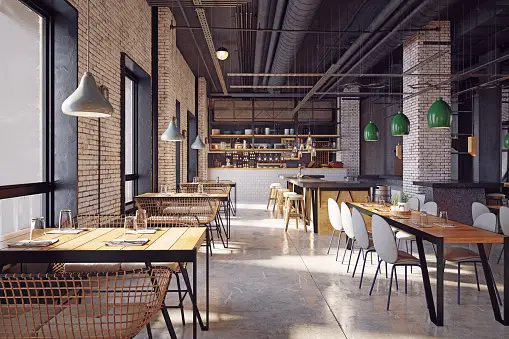Image Source: Google
Restaurant interior design is a crucial element that can significantly impact the overall dining experience of customers. Beyond just serving delicious food, restaurants need to create a welcoming and visually appealing ambiance that enhances the overall dining experience.
The design of a restaurant's interior can influence customers' mood, behavior, and perception of the food and service. In this article, we will explore how the best restaurant interior design plays a powerful role in shaping customer experience.
The Importance of Restaurant Interior Design
When customers walk into a restaurant, the first thing that catches their attention is the interior design. The ambiance of a restaurant can set the tone for the entire dining experience. Here are some reasons why restaurant interior design is crucial:
Creates a Memorable Experience
- A well-designed restaurant interior can create a lasting impression on customers, making them more likely to remember their dining experience.
- Memorable experiences can lead to repeat visits and positive word-of-mouth recommendations.
- An aesthetically pleasing ambiance can make customers feel comfortable and relaxed, enhancing their overall enjoyment of the meal.
Reflects the Restaurant's Brand and Concept
- The interior design of a restaurant should align with its brand identity and concept.
- Whether it's a cozy cafe, a trendy bistro, or a fine dining establishment, the design should convey the restaurant's unique style and personality.
- Consistent branding through interior design can help build a strong connection with customers and differentiate the restaurant from competitors.
Elements of Effective Restaurant Interior Design
Creating a successful restaurant interior design involves careful attention to various elements that contribute to the overall ambiance. Here are some key elements of effective restaurant interior design:
Lighting
- Lighting plays a crucial role in setting the mood and atmosphere of a restaurant.
- Soft, warm lighting can create a cozy and intimate feel, while bright, natural lighting can make the space feel fresh and inviting.
- Proper lighting design can highlight focal points within the restaurant, such as artwork, decor, or architectural features.
Furniture and Layout
- The choice of furniture and its arrangement can impact the comfort and functionality of the space.
- Comfortable seating is essential to ensure that customers can relax and enjoy their meal.
- The layout of tables and seating areas should be optimized to maximize space and accommodate different group sizes.
Color Scheme and Decor
- The color scheme and decor of a restaurant can evoke different emotions and create a specific ambiance.
- Warm colors like red and orange can stimulate appetite, while cool colors like blue and green can create a sense of calm.
- Decor elements such as artwork, plants, and textiles can add visual interest and personality to the space.
Impact on Customer Experience
The design of a restaurant's interior has a direct impact on the overall customer experience. Here are some ways in which restaurant interior design influences customer perceptions and behaviors:
Enhances Dining Experience
- A well-designed interior can enhance the overall dining experience, making customers feel more comfortable and relaxed.
- An inviting ambiance can encourage customers to stay longer, order more items, and potentially return in the future.
- The design elements of a restaurant can create a memorable and enjoyable dining atmosphere that leaves a positive impression on customers.
Shapes Perception of Food Quality
- The design and atmosphere of a restaurant can influence customers' perception of the quality of the food.
- A clean, well-designed interior can convey professionalism and attention to detail, which can translate to perceptions of higher food quality.
- An aesthetically pleasing environment can create a positive association with the dining experience, even before the food is served.
Encourages Social Interaction
- The layout and design of a restaurant can impact how customers interact with each other during their dining experience.
- Comfortable seating arrangements and a welcoming ambiance can promote socialization and conversation among diners.
- Well-designed communal spaces or bar areas can encourage customers to engage with each other and create a sense of community within the restaurant.
